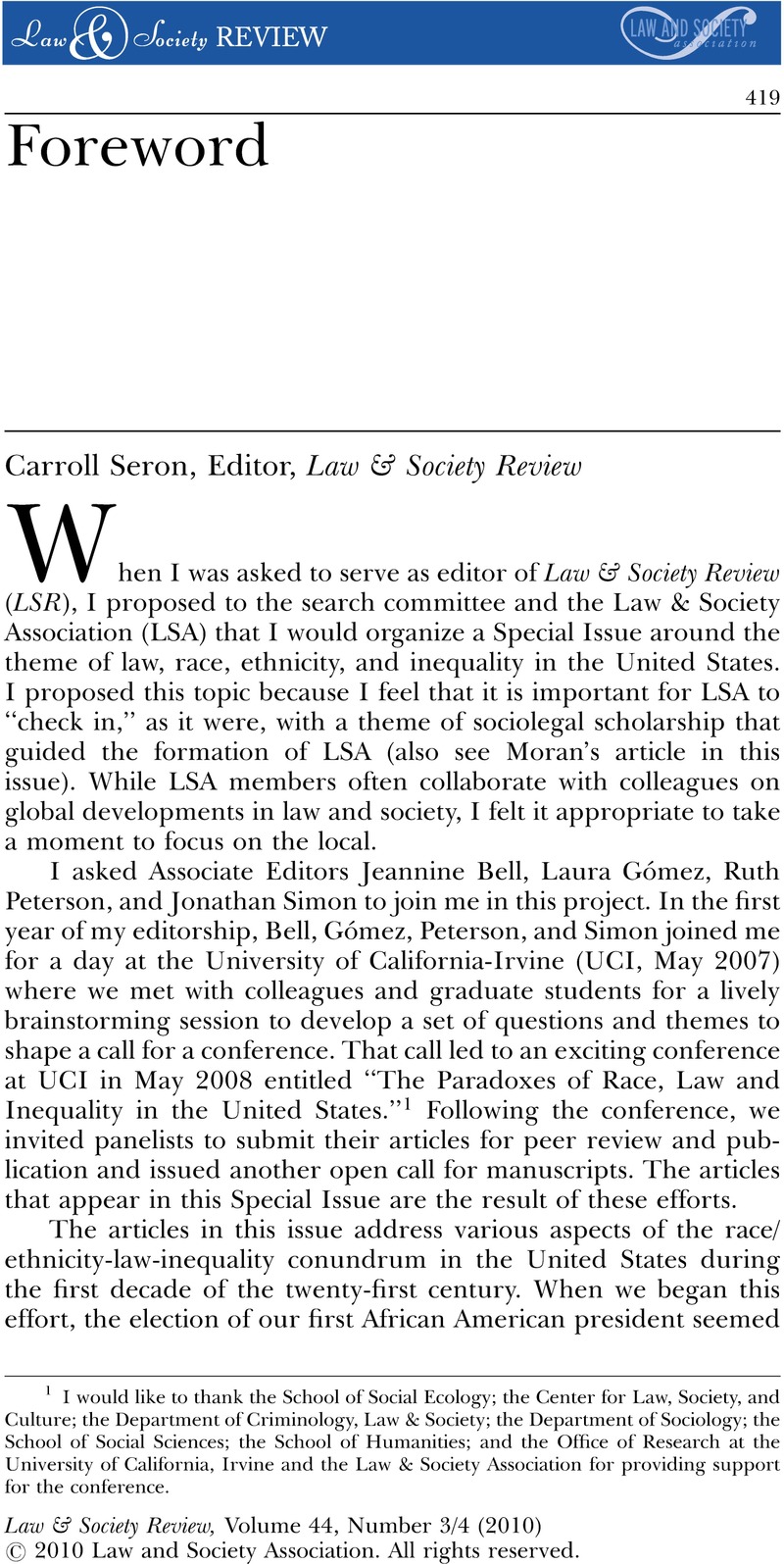Crossref Citations
This article has been cited by the following publications. This list is generated based on data provided by Crossref.
Gómez, Laura E.
2012.
Looking for Race in All the Wrong Places.
Law & Society Review,
Vol. 46,
Issue. 2,
p.
221.
Omori, Marisa
2019.
“Nickel and Dimed” for Drug Crime: Unpacking the Process of Cumulative Racial Inequality.
The Sociological Quarterly,
Vol. 60,
Issue. 2,
p.
287.
Morrill, Calvin
Edelman, Lauren B.
Fang, Yan
and
Greenspan, Rosann
2020.
Conversations in Law and Society: Oral Histories of the Emergence and Transformation of the Movement.
Annual Review of Law and Social Science,
Vol. 16,
Issue. 1,
p.
97.



